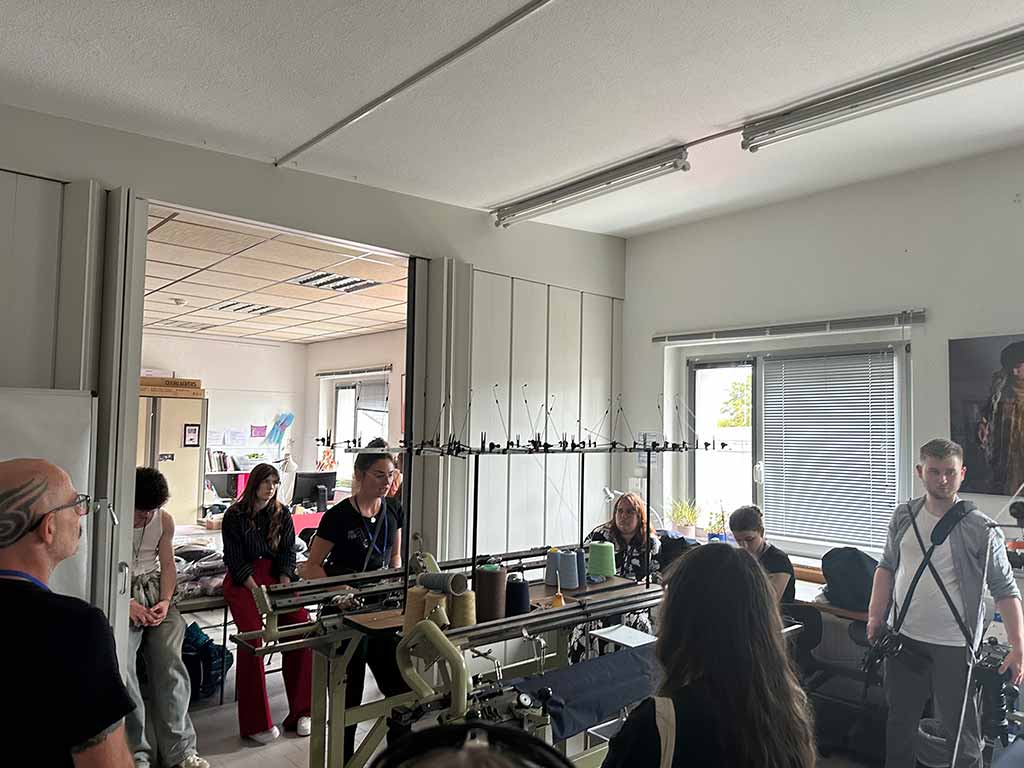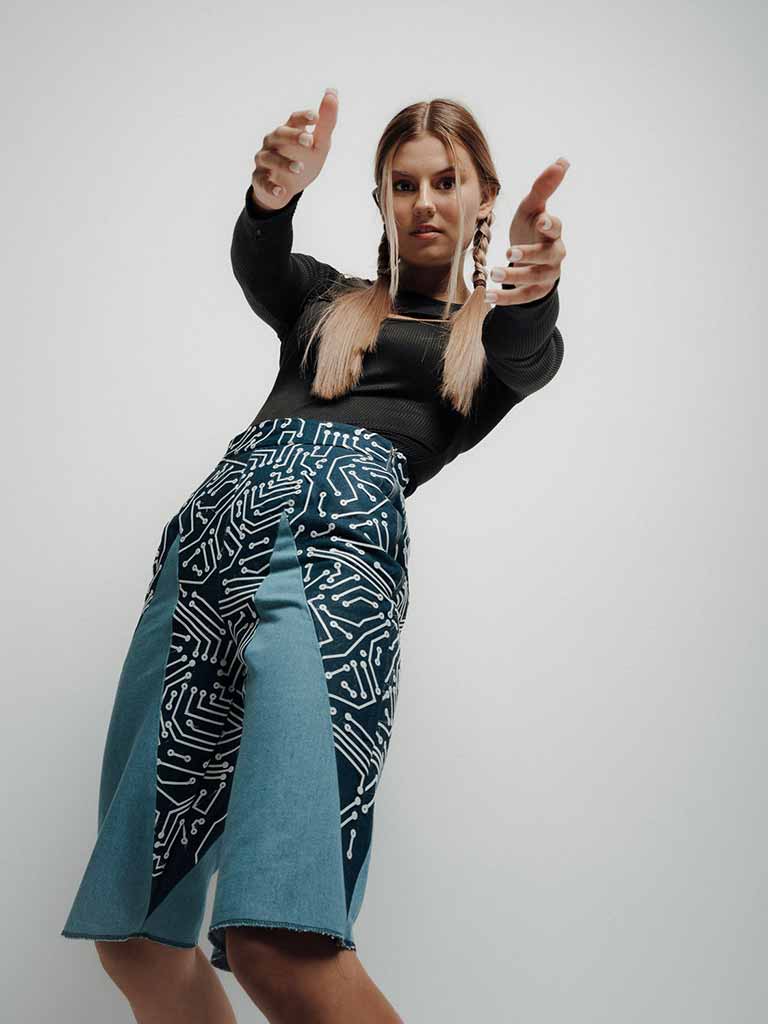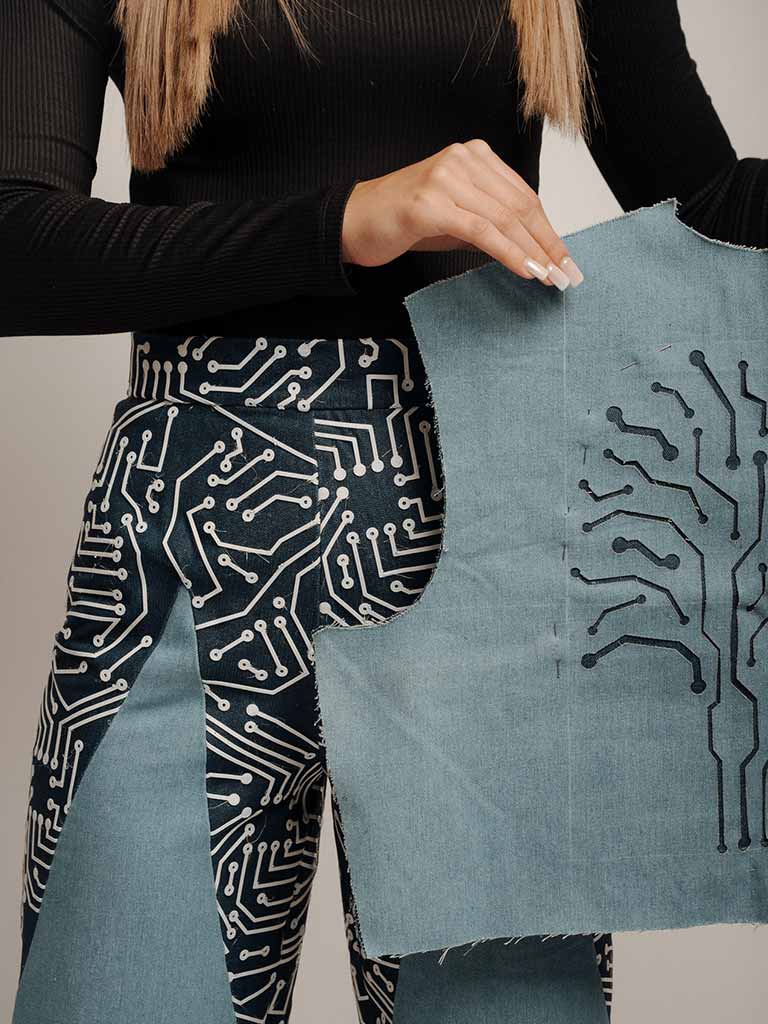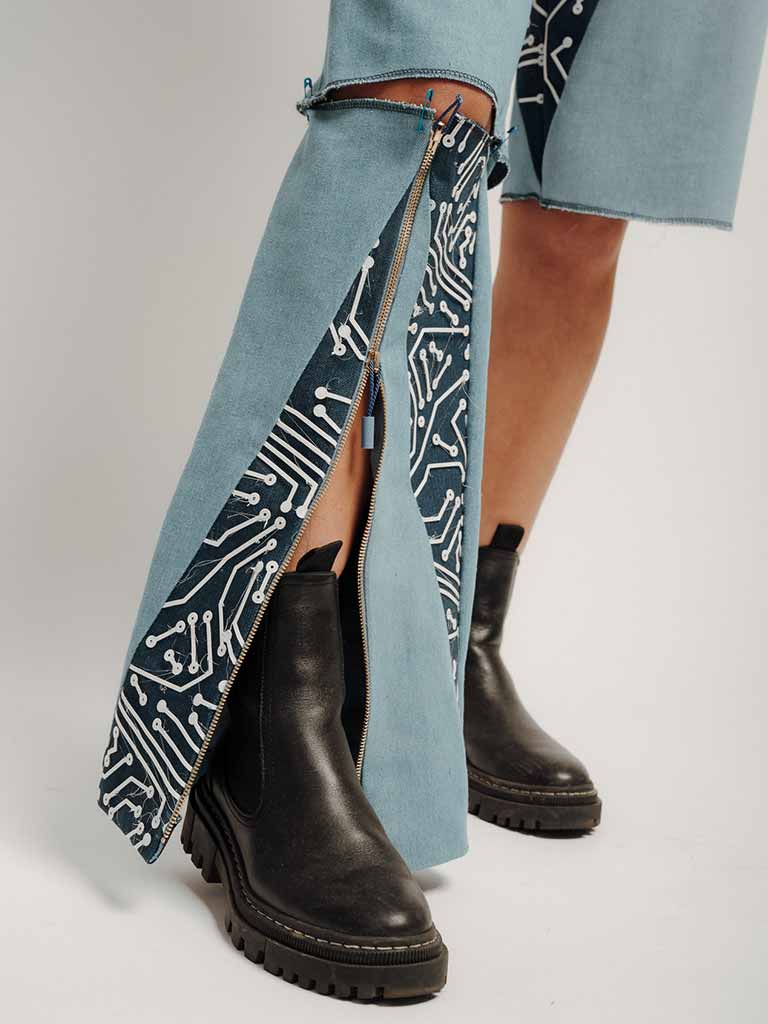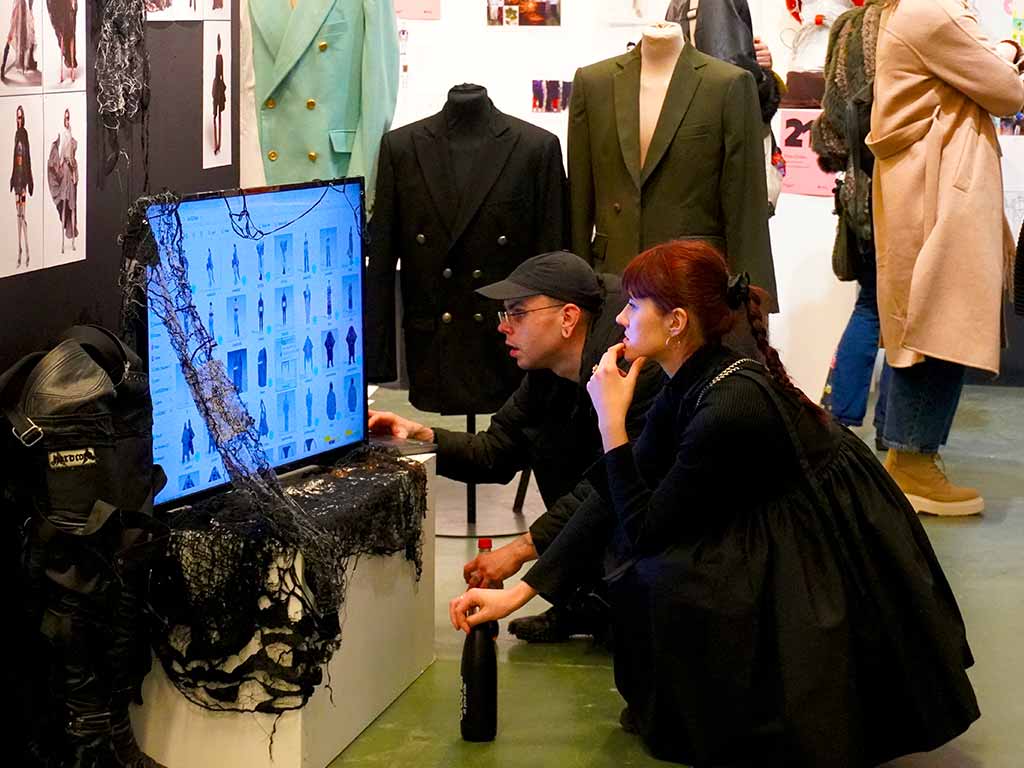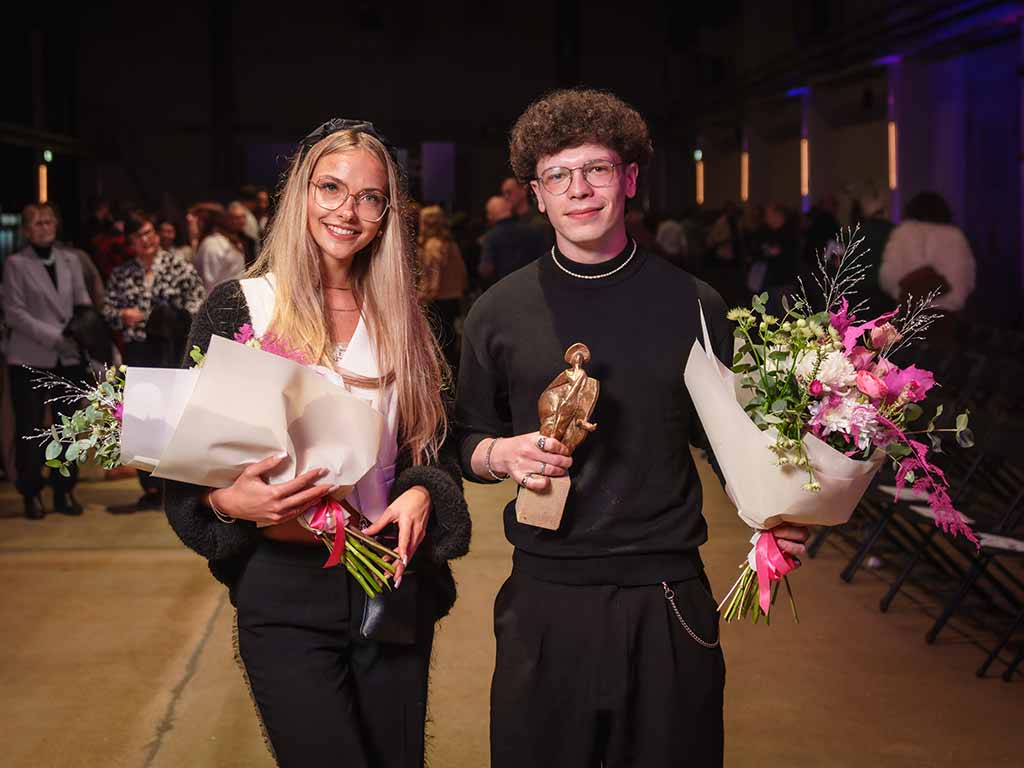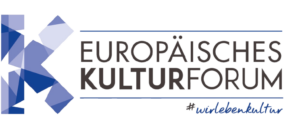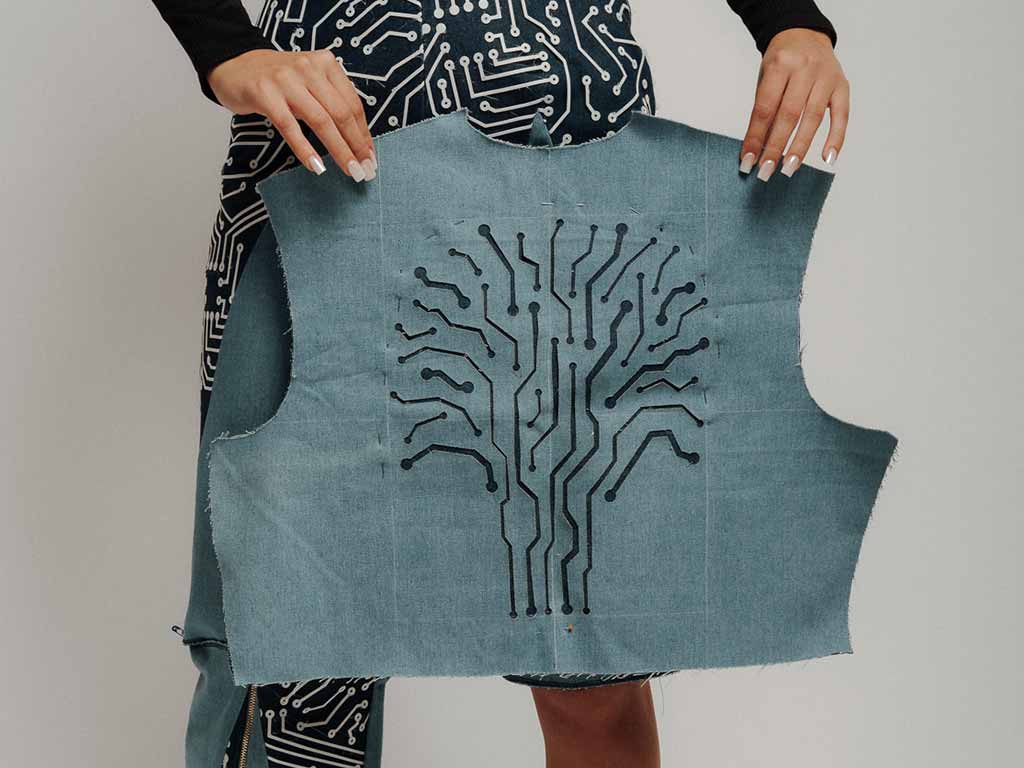
“The Makerspace showed me how diverse creative work can be” in an interview with Eugenia Lazariv
Eugenia Lazariv, 21, is in her second year of a master’s degree at the Kyiv National University of Technology and Design. As part of a project, she worked in the makerspace, exploring new technologies and creative methods. She talks to us about her experiences, challenges, and how the makerspace has shaped her way of working.
Eugenia Lazariv, what new skills or insights did you gain in the makerspace – perhaps beyond the purely technical aspects?
Eugenia Lazariv: In the makerspace, I learned a lot about teamwork and using new digital tools. I found working with 3D printers and experimenting with Adobe Substance particularly exciting. These experiences showed me how diverse the creative process can be when technology and design come together.
Was there a moment when you thought, “This is an aha moment” or “This is a truly innovative approach”?
Eugenia Lazariv: I can’t name a specific moment, but the makerspace was full of little aha moments. I kept trying new things and finding ways to put my ideas into practice.
Did you make new contacts or connections with other students or universities through the makerspace?
Eugenia Lazariv: Yes, of course. The exchange with other students was very enriching. I had many interesting conversations and exchanged ideas with colleagues about projects and creative approaches.
What was the biggest personal challenge for you while working in the makerspace – and how did you overcome it?
Eugenia Lazariv: The biggest challenge was the physical realization of my product. I’m still working on it, but this process required a lot of patience, precision, and perseverance – and it helped me progress.
What concrete result or insight have you taken away from working on your avatar or outfit?
Eugenia Lazariv: I learned to integrate digital and physical design more closely and to pay attention to details early on in the process. This deepened my understanding of design.
Was there a moment that positively surprised or particularly inspired you?
Eugenia Lazariv: Yes, definitely. The entire atmosphere in the makerspace was incredibly inspiring. It was motivating to work with others on creative projects and bring ideas to life.
Which technical tools did you work with most – and what did you learn from them?
Eugenia Lazariv: I worked a lot with 3D programs, the laser cutter, the 3D printer, and the embroidery machine. Working with fabric textures in Adobe Substance was particularly new to me. This taught me how to create realistic digital materials.
What result of your work in the makerspace are you most proud of?
Eugenia Lazariv: Even though there wasn’t enough time to fully implement all of my ideas, I’m very satisfied with the results so far. It was an intense and educational experience.
How do you plan to continue after the makerspace?
Eugenia Lazariv: I want to further develop my skills and work on similar projects. The makerspace has given me a lot of new inspiration that I want to incorporate into future work.
Are there any ideas or projects you’d like to develop further, whether for the Holo show or other areas?
Eugenia Lazariv: Yes, I’m currently working on some ideas. I’d like to integrate some of them into new projects and explore them further.
What was your greatest personal gain from your time in the makerspace?
Eugenia Lazariv: It’s hard to pick just one. Overall, I learned a lot of new things—about technology, creative processes, and also about myself.


